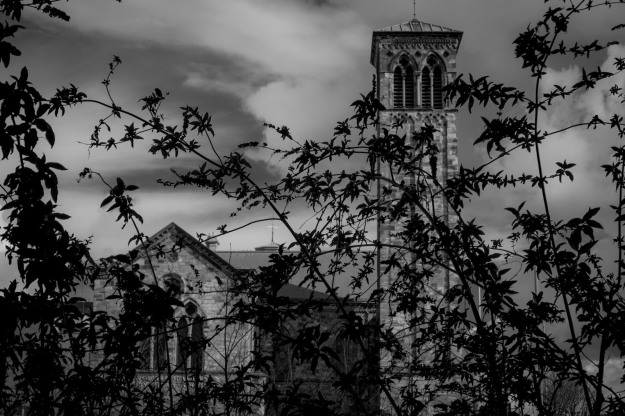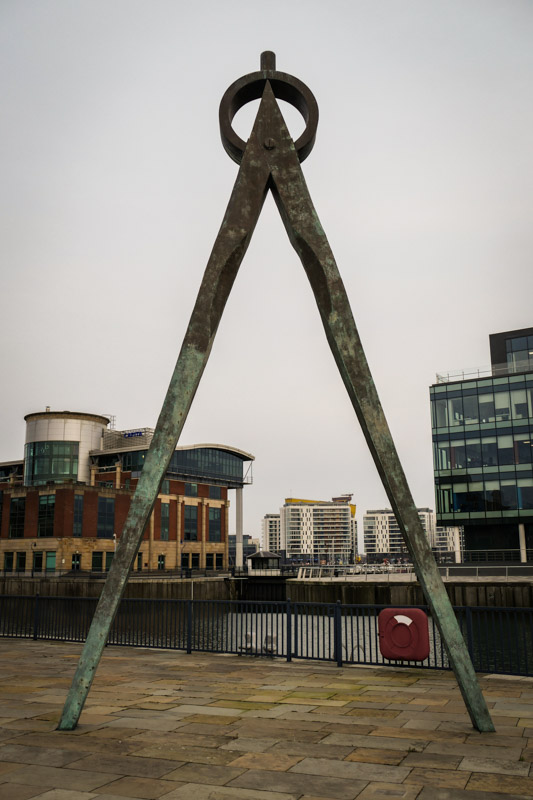Onwards to the Clarendon Dock area of Belfast; not the most exciting area (bar the two locations we’re about to mention) but since we visited, a £250 million development plan has been agreed and work has already started on making the area one of Belfast’s ‘up and coming’ spots. Huge office blocks, housing, hotels, shops and restaurants are all proposed for the 20-acre site and you can see quite a bit of work already underway. Whether or not this is a good thing, I’m just not sure; with the recent demolition in the North Street and Kent Street areas of the city centre (on buildings which were soon to be listed), as well as the ‘Athletic Stores’, a beautiful Victorian warehouse on Queen Street, we are losing so much of the ‘old’ Belfast. Clarendon, and it’s neighbour Sailortown, are so rich in history, do we really want to see that overwritten with more offices and apartments?

So from the aforementioned ultra-modern office blocks, to Sinclair Seamen’s Presbyterian Church, and Belfast Harbour Commissioners Office, both of which date back to the mid 1800s; we took a trip to both buildings as part of the European Heritage Open Day back in 2015 (yes, we know, we are EXTREMELY far behind with our blogging).
If you like all things nautical, you will absolutely love Sinclair Seamen’s; not only is their pulpit surrounded by a prow of a ship, they have dozens of other pieces of memorabilia around the church, from beautiful stained glass windows and floor tiles, to anchors, masts, a ship’s log (in which the important comings and goings of a ship were recorded), a capstan (those big spool-like structures you see next to docks) and flags and ropes galore, are all on permanent display.
As well as opening up for EHOD, the church welcomes visitors most Wednesdays (2pm-4.30pm) as well as their regular Sunday services (11am and 6.30pm). Our photos from the church aren’t fantastic so we would strongly advise a visit. The church members who spoke to us were extremely knowledgeable about all the interesting items inside, and sadly told us about some former members of the congregation who believed the nautical items were too much of a novelty. We loved it though, and you should certainly call in for a nosey and a chat if you’re in the area.
Next door, to the Harbour Commissioners Office. The building is not usually open to the public so we were very lucky to see inside. A fairly sizeable collection of fine art resides inside, as well as more incredible stained glass windows.
Also as part of EHOD 2015, we joined PLACE for a walking tour. Rachel will talk more about this in our next blog about Sailortown, but we also had a little dander around Clarendon’s two graving docks; not as humongous as the dry dock in Titanic Quarter but a nice place to visit in the middle of the dozens of grey office buildings. The docks date back to the early 1800s (the oldest graving docks in Belfast) and sit next to a building which was used as a workshop for designing ships’ rigging (the system of ropes and chains used to support a ship’s mast).
As you dander through the area you’ll see the Dividers sculpture by Vivien Burnside. According to Belfast Harbour, “The Dividers sculpture stands as an archway or frame as the viewer looks inwards to the changing city or outwards to the sea. Dividers, in connecting points, allude to communication and navigation intrinsic to the Clarendon Dock area.” The notion of division more or less sums up our impression of the area after our visit. The maritime history of Clarendon Dock sits in contrast to the area’s contribution to the city as a growing business district.

Dividers by Vivien Burnside
Despite the fast-moving modernisation of the area, don’t be put off visiting; there is still plenty of history and stories to be told there!
Keep an eye on Discover Northern Ireland’s website for future EHOD events.
-Clare


















